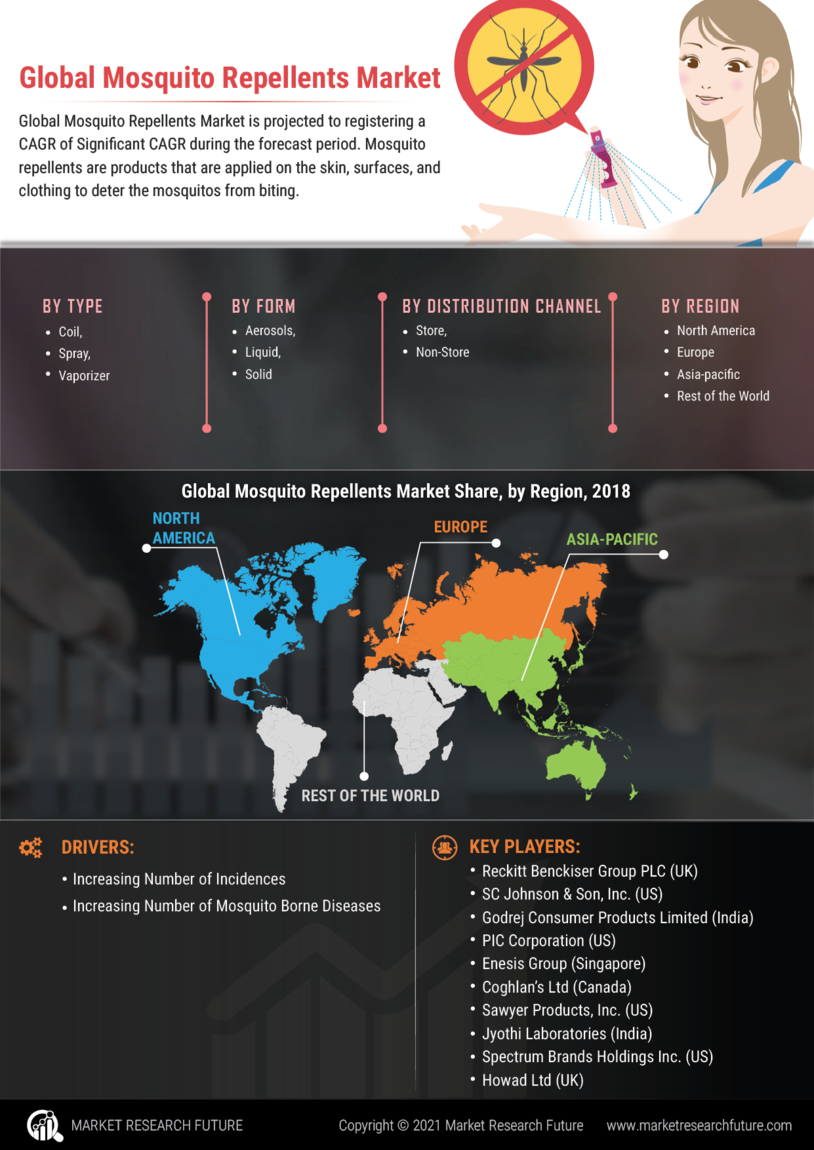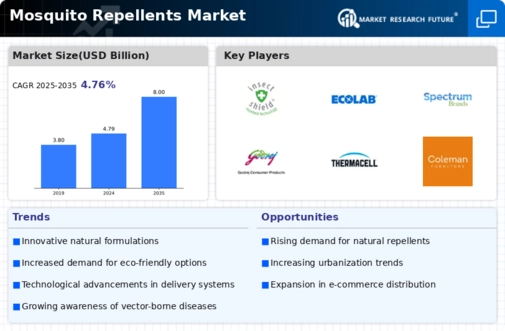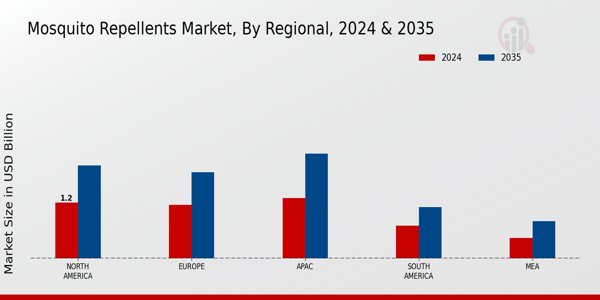Market Growth Chart
Rising Global Health Concerns
The increasing prevalence of mosquito-borne diseases such as malaria, dengue fever, and Zika virus significantly drives the Global Mosquito Repellents Market Industry. Health organizations worldwide emphasize the need for effective prevention strategies, leading to heightened consumer awareness regarding mosquito repellents. In 2024, the market is projected to reach 4.79 USD Billion, reflecting a growing demand for protective measures. Governments in various regions are implementing public health campaigns to educate citizens about the risks associated with mosquito bites, further propelling the market. This trend suggests that as health concerns escalate, the demand for mosquito repellents will likely continue to rise.
Urbanization and Population Growth
Rapid urbanization and population growth in various regions are influencing the Global Mosquito Repellents Market Industry. As cities expand, the likelihood of mosquito breeding grounds increases, leading to higher incidences of mosquito-borne diseases. Urban areas often face challenges related to stagnant water and inadequate waste management, creating conducive environments for mosquito proliferation. This urban scenario necessitates effective mosquito control measures, including the use of repellents. The growing population, coupled with urbanization, is likely to drive the demand for mosquito repellents, as consumers seek to protect themselves and their families from potential health risks.
Growing Outdoor Recreational Activities
The surge in outdoor recreational activities, such as camping, hiking, and picnicking, is a notable driver of the Global Mosquito Repellents Market Industry. As more individuals engage in these activities, the need for effective mosquito protection becomes paramount. This trend is particularly evident in regions with high mosquito populations, where outdoor enthusiasts are more susceptible to bites. The market's growth is further supported by the increasing awareness of the health risks associated with mosquito-borne diseases. Consequently, the demand for mosquito repellents is expected to rise, contributing to a compound annual growth rate of 4.77% from 2025 to 2035.
Technological Advancements in Repellent Formulations
Innovations in the formulation of mosquito repellents contribute significantly to the expansion of the Global Mosquito Repellents Market Industry. New technologies enable the development of more effective and longer-lasting products, appealing to consumers seeking reliable protection. For instance, the introduction of microencapsulation techniques enhances the efficacy of active ingredients, allowing for sustained release over time. This advancement not only improves user experience but also aligns with the increasing demand for environmentally friendly options. As the market evolves, these technological enhancements are likely to attract a broader consumer base, thereby supporting the projected growth of the market to 8 USD Billion by 2035.
Increased Availability of Mosquito Repellent Products
The Global Mosquito Repellents Market Industry benefits from the increased availability of diverse mosquito repellent products across various distribution channels. Retailers, both online and offline, are expanding their offerings to meet consumer demands for convenience and variety. This trend is particularly evident in regions with high mosquito activity, where consumers are more inclined to purchase repellents. The rise of e-commerce platforms has further facilitated access to a wide range of products, allowing consumers to choose from various formulations, including sprays, lotions, and wearable devices. This enhanced accessibility is likely to contribute to the market's growth trajectory in the coming years.


















